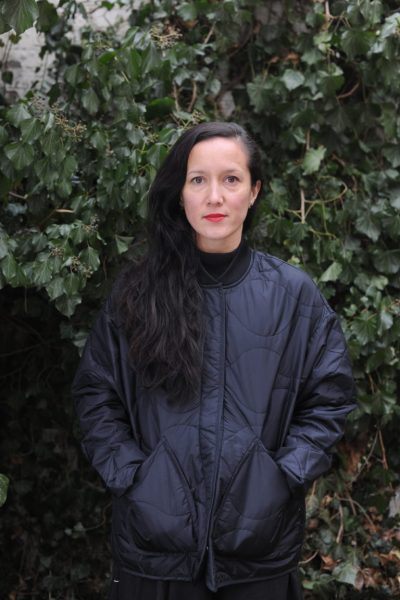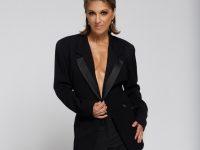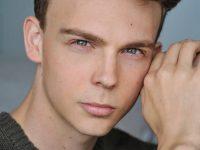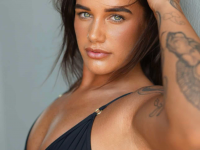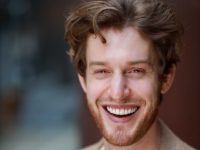Rising Festival 2024
Australian/Javanese Choreographer and Performer
Interview by Chris Duncan
Melanie is an Australian/Javanese choreographer and performer. She has collaborated with artists from film, visual art, theatre and music, creating works that tread between performative forms and contexts. Her independent work has been presented at international festivals and theatres in Europe. USA, Indonesia and Australia.
This week, Chris Duncan had a chance to catch up with Melanie to discuss Arkadia which will be part of RISING Festival 2024.
“Arkadia” blends themes of mythology, science fiction, and utopia. Can you discuss what inspired you to fuse these elements together for this dance work?
Melanie Lane: I’ve been a long time fan of science fiction, mythology and folklore as I feel it’s a space that invites reflection on our human condition. The seed for this work came during the covid pandemic, when I found myself thinking about death on the daily whilst living in this sort of global liminal reality. It felt like a science fiction, a holding bay that suspended us in a state of flux, of the unknown. The question of an afterlife is an ancient one, that has manifested across cultures often in the form of various utopias, supernatural places of rest, pleasure and transformation. I became curious about these fictional paradises how they are a place for our bodies to transcend our reality. It felt like a resonant space to explore through dance.
The concept of a Garden of Paradise is rich with symbolism. What specific aspects of life, afterlife, and reincarnation are explored in “Arkadia”?
Melanie Lane: Diving into the concept of the afterlife opens up a pandora’s box of questions and fantasies. In Arkadia we lean into fantasy and explore the idea of thresh-holds between life and the afterlife and the many forms this has been expressed through myth and folklore. We imagine a journey of leaving our reality, a place where time, relationships, materiality inform our bodies, to travel towards an unknown realm where we might have the ability to transform beyond our limits, within a mythic place that promises rest, pleasure and immortality.
You mention gods, nymphs, and aliens as characters within “Arkadia”. How did you go about creating and developing these characters for the stage? What do they represent within the narrative?
Melanie Lane: In Arkadia we are influenced by science fiction, ancient myths and folklore as well as each performer’s cultural and personal histories, and have designed a speculative realm that weaves them together to inhabit this world. It’s a melting pot of ancient gods, ancestral spirits, new born aliens and water nymphs. These figures represent the various mythologies of the afterlife. A supernatural paradise where bodies can shape-shift, morph and re-incarnate. Dance is a unique language that allows audiences to immerse through movement and image making, and in Arkadia there are multiple fictional narratives that interconnect the dancers through a shared experience of physical transformation and mythic conjuring.
The performance merges the natural with the digital. Can you elaborate on the technologies used in the production and how they enhance the storytelling?
Melanie Lane: In Arkadia a major part of the visual world is the integration of 3D animation, developed by Tokyo based artist Kim Laughton. Projected across screens that are integrated into Eugyeene Teh’s set design, Kim’s animation serves as a visual portal that pulls us into the dream that is Arkadia. In addition, a large body of water reflects this projected world, creating a threshold between reality and fiction.
The animation is developed through a gaming software called Unreal engine, that creates uncannily real worlds – for Arkadia we have developed a fictional universe that travels in time and space, connecting myths and stories through a web of evocative imagery, whilst also creating the world in which the performers reside.
How does the choreography in “Arkadia” reflect the transformation and interaction of mythical and digital entities? What were some of the challenges in choreographing these ideas?
Melanie Lane: Choreographically, we are working with mythic figures drawing from stories of the afterlife and the spirit world. To create imagery that evokes a sense of the supernatural has been a fertile space to explore. Our creative process has reached towards ancestral linages and cultural stories that intersect with speculative fantasies. Working with gaming animation has felt like a powerful tool that has allowed us to dream into the world building of Arkadia as it has the ability to create unimaginable, fantastical environments that frame the choreography and dancers. There are always challenges when creating a world that is unique and other-worldly, carefully treading territory that is both familiar and alien. The biggest challenge was perhaps understanding and developing the choreographic languages for the land of paradise. How do we perform super natural powers and immortality, and how do we invite audiences to dream about this with us?
“Arkadia” is described as a realm of dreams. How do you intend for the audience to interact with or be part of this immersive experience?
Melanie Lane: The bridge between fiction and reality is what has become the magic of Arkadia, a world in which we can dream into and be transported. Arkadia has been created as a space for reflection, in a way that is immersive and poetic through its sound, design and movement. There are no answers, rather a journey of thought provoking images and choreographies. I like to perceive it like an audience visiting a wishing well, a magical portal where imagination might come to life.
The performance is a place to reflect on themes like extinction and immortality. How do you weave these profound themes into the dance and visual elements of the show?
Melanie Lane: They are very existential themes, ones that zoom out on our reality. Zooming out has felt like a big part of the world building process. Science fiction often speaks to these existential themes, extinction serving as a threat that summons acts of survival. Immortality as an escape from death. Those ephemeral experiences when you believe in fiction for a moment in time, like watching a sci-fi film or day dreaming to music, allow us to zoom in and out on our existence. Ultimately Arkadia is a fictional world that creates a gentle space for zooming in and out on death.
Could you talk about the visual and costume design of “Arkadia”? How do these elements contribute to the overall atmosphere and theme of the garden of paradise?
Melanie Lane: The set and costume design from Eugyeene Teh situate both the performers and audience in a liminal space that is travelling towards the garden of paradise. With a central element of a pool of water and animated screens, the set design is integral to the atmosphere of the work, a sacred space that travels in time and place. The animated environment designed by Kim Laughton creates a multi-dimensional realm that travels beyond the Substation and into hyperreality – a world beyond our own.
The costumes reflect layers of skins that peel away, revealing new forms that transform each performer as they move through multiple incarnations of themselves. Working with textures like latex, tulle and transparency, the skins morph between organic and synthetic, echoing the tension between natural and unnatural.
As a dance opera, music plays a crucial role. What can you tell us about the musical composition for “Arkadia”? How does it complement the dance and thematic content?
Melanie Lane: With long time collaborator Christopher Clark (aka Clark), we’re exploring a sonic universe that feels immersive and filmic. Chris’s more recent works have integrated strings, piano and vocals. These instruments in dialogue with electronics felt like the right palette for diving into the existential themes of Arkadia. We also allowed ourselves to be unafraid of drama and virtuoso that is often resisted in contemporary dance, to rather embrace the potential of what a dance opera might look, feel and sound like.
What do you hope audiences take away from “Arkadia”? How does this piece fit into the broader trajectory of your work and your artistic goals?
Melanie Lane: I hope Arkadia offers a form of dance performance that transports, moves and transforms audiences. It’s a work for everyone. My work on Arkadia is part of a continuing interrogation and unpacking of fiction and myth-making in social, cultural contexts as a lens to reveal the human condition through choreography, sound, technology and visual design.
By expanding the potential of multi-artform collaborations, I’m continuing to explore and learn how collaborative relationships can open doors to new ways of making and experiencing dance. Arkadia is the first work presented by Corps Conspirators, a 2 year project supported by Creative Victoria led by myself, that explores collaborative choreographic practices, traversing technology, design, music and transcultural experience.
Melanie Lane Bio:
As a performer she has worked with various companies and artists such as Kobalt Works | Arco Renz (B), Club Guy and Roni (N), Tino Seghal (G), Antony Hamilton (AUS) and Lucy Guerin (AUS), performing world wide.
As a choreographer, Melanie has established a repertory of works performing in international festivals and theatres such as Tanz im August, Uzes Danse Festival, Arts House Melbourne, Sydney Opera House, O Espaco do Tempo, Festival Antigel, Dance Massive, Carriageworks, Chunky Move and HAU Hebbel am Ufer Berlin among others. She has been artist in residence at Dock 11 Berlin, Tanzwerkstatt Berlin, Lucy Guerin Studios, Arts House Melbourne and Schauspielhaus Leipzig.
Melanie is currently Choreographer in Residence at Chunky Move, Resident Artist at The Substation Melbourne and Associate Artist at QL2 Canberra.
For more information and tickets, visit the RISING festival website https://2024.rising.melbourne/

